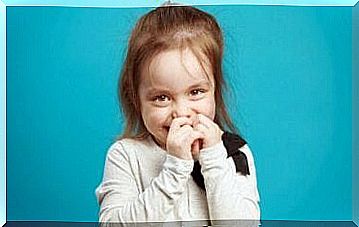Visualization To Help Children Fall Asleep – Being Parents

While sleep is a fundamental process for all people, in children it is even more relevant because they are still developing. Not getting enough sleep for their age can lead to daytime sleepiness, poor academic performance, and behavioral problems. Discover the benefits of visualization in children.
In addition, difficulty falling asleep can cause a high level of discomfort which leads to fear when falling asleep. In these cases, visualization is a simple technique that provides good results.
It may seem that insomnia is an adult problem. However, it affects over 30% of the infant population. Young people also have concerns and fears. In addition, children with a more anxious temperament mainly have difficulty sleeping. Therefore, teaching them tools appropriate to their age and development can prevent the problem from spreading and lasting over time.

What is visualization?
Visualization is simply about creating imagined mental scenes. It’s something we all do constantly as we envision our future or anticipate how a situation might turn out. On the other hand, due to their greater creative ability, children have the opportunity to imagine scenarios.
The problem arises when such images are negative or anticipate a risk, problem or possible failure. For example, if the child thinks that something bad is going to happen to his family, that he will make a fool of himself during the oral presentation in class the next day or that he will be rejected by his classmates. These images are a source of worry, anxiety and unease. Also, if they occur before bedtime, it will likely be very difficult to fall asleep.
So, deliberate visualization is all about imagining pleasant, peaceful, and positive scenarios. It’s about mentally immersing yourself in a scene that generates emotions such as tranquility, joy or satisfaction.
Why does visualization help children fall asleep?
At bedtime, visualization can help children fall asleep for several reasons. Among the main ones are the following:
- It promotes relaxation of the body and the release of tension. Less restlessness or hyperactivity.
- A guide for the mind to pleasant and positive thoughts. The child therefore has no more room to reflect on these fears and worries that prevent him from falling asleep.
- Difficulty falling asleep can increase the child’s anxiety over the minutes and he sees that he is still awake. By focusing on visualization, he will not be aware of the time that passes before falling asleep.
- In addition, visualization can be used for several positive purposes, such as increasing a child’s self-esteem, helping them overcome their fears, or get rid of their worries. It will depend on how the story is created. For example, you can guide him in a visualization through a forest inhabited by a magical tree that asks him to hang his marigolds on the branches and leave them.
How to teach children to visualize?
While it is certain that we visualize continuously, learning to do it on purpose is not always easy. This is why guided visualizations can be a very good alternative. On the Internet you can find a lot of videos and apps with guided visualizations for children, which accompany them in the process of creating enjoyable scenes.

But you can also choose to do it yourself. When your child is lying in bed, put on relaxing background music, with nature sounds or soft melodies. Keep the light dim and start telling a story as if it’s living it in first person. You can drive it through an enchanted forest, a beach or a rural landscape. Any relaxing natural setting is suitable.
Help him, with your narration, to immerse himself in the scene. Describe the smells of flowers, the sounds of nature, etc. Tell him, for example, that plants can talk with trees or with animals. There are no limits to the imagination.
Over time, he will learn to create his own visualizations on his own and will not need your guidance to practice this technique. Plus, you can do it anywhere, even if you are sleeping away from home, because all you need is your imagination. As well as being effective, it is a strategy that is fun and enjoyable for children. They therefore tend to accept it easily.








